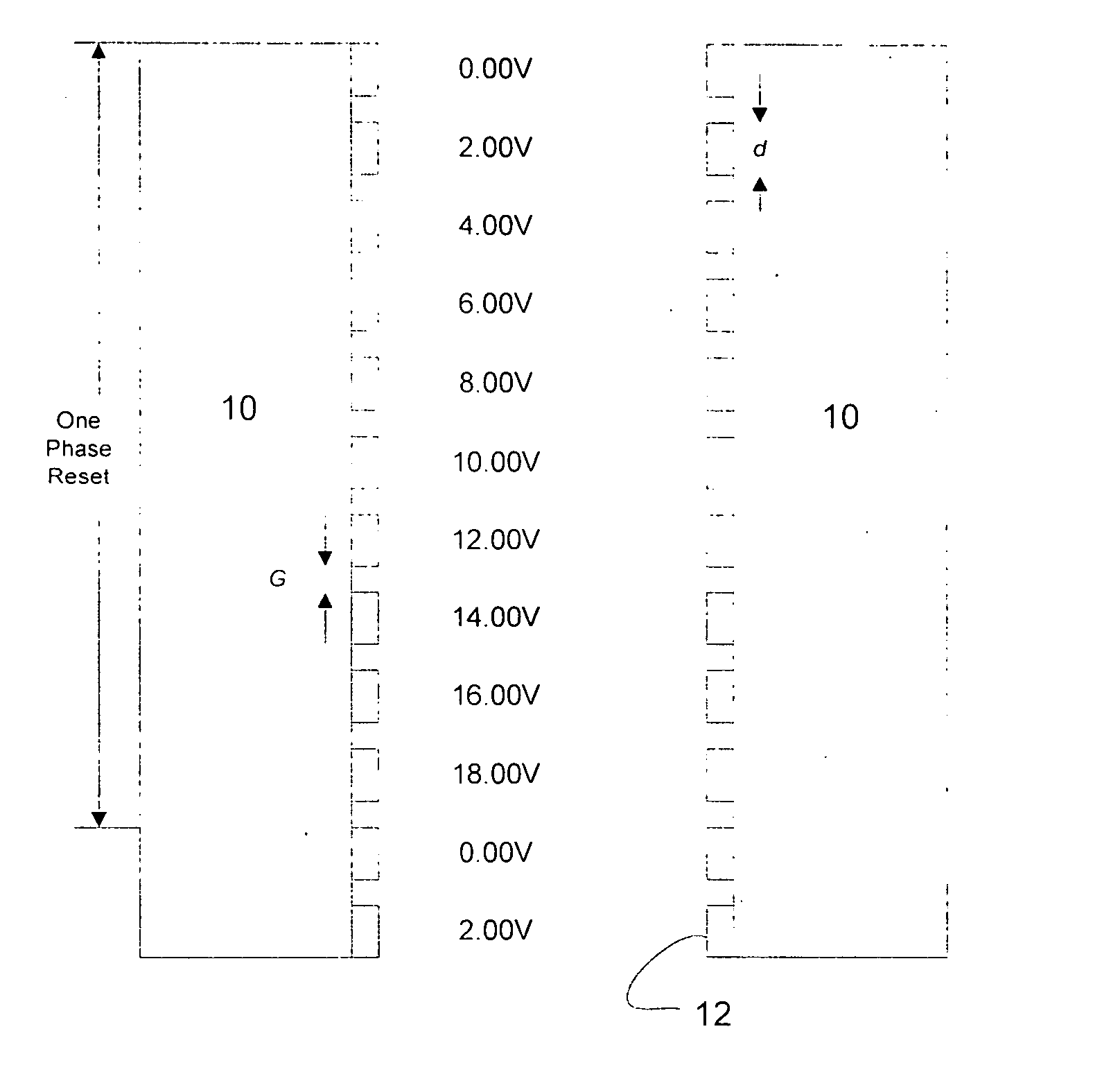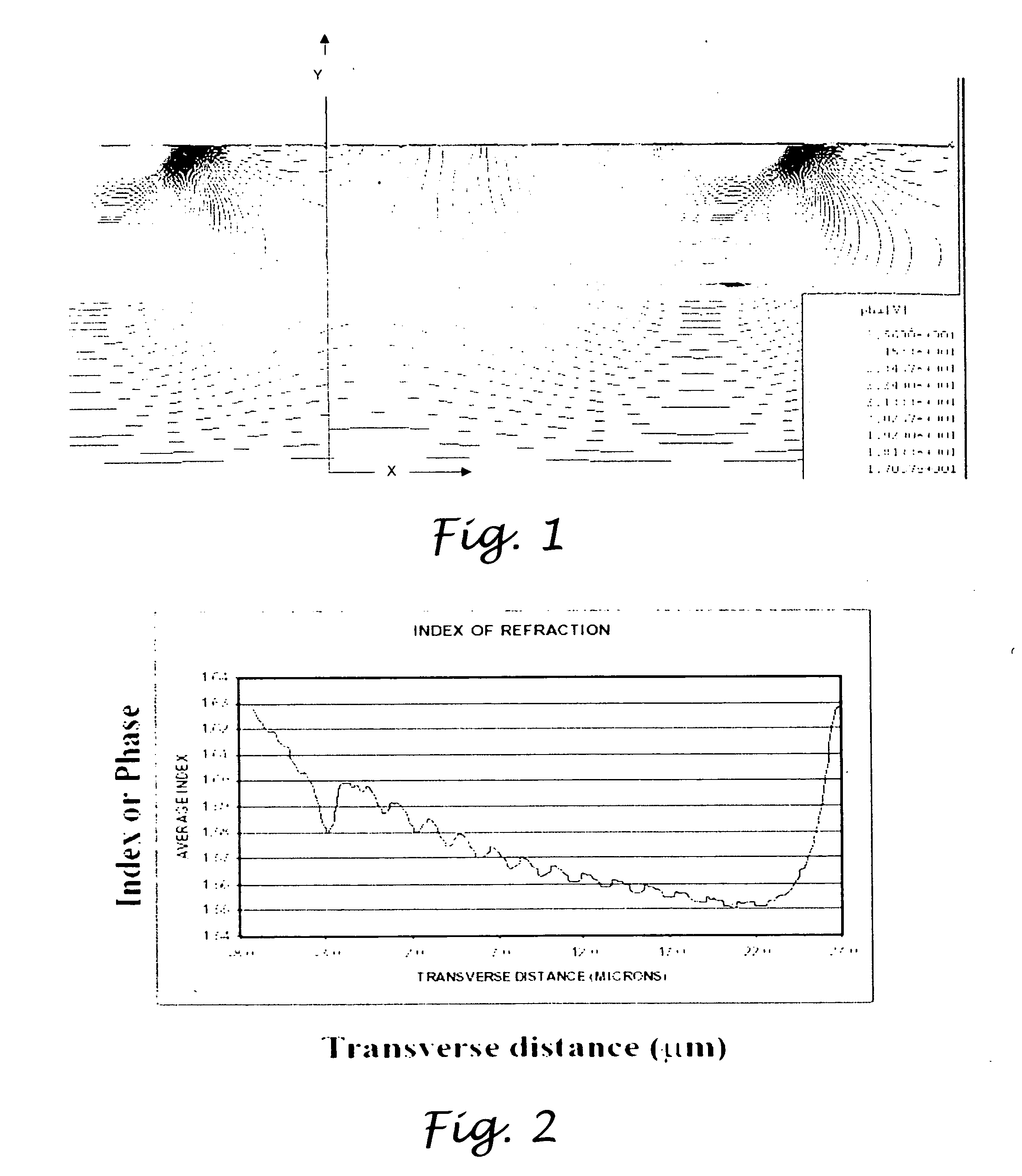Electro-optic crystal, diffraction-based, beam-steering element
a technology of diffraction-based beam steering and electro-optic crystals, applied in non-linear optics, instruments, optics, etc., can solve the problems of reducing diffraction efficiency, limited performance of a single element that uses liquid crystal techniques, and limitation of the steering angle of liquid crystal techniques, so as to improve diffraction efficiency
- Summary
- Abstract
- Description
- Claims
- Application Information
AI Technical Summary
Benefits of technology
Problems solved by technology
Method used
Image
Examples
Embodiment Construction
[0028] Potassium tantalate niobate (KTN) has been known to be a highly optically-active material since 1960's, but the application of potassium tantalate niobate has been very limited because the difficulty for fabrication. Potassium tantalate niobate is strongly dependent on temperature. In certain scenarios, the electro-optic coefficient of potassium tantalate niobate rc can reach as high as about 1800 pm / V, which is about 60 times more than the analogous electro-optic coefficient for lithium niobate (LiNbO3). The index of refraction of potassium tantalate niobate can be modulated with an applied voltage as: Δ n=nc32rcEz,(1)
where nc=2.277, and Ez is the applied voltage. The difference of index of refraction results in an optical-path length OPL(x) of an optical beam propagating through the potassium tantalate niobate medium as:
OPL(t,x)=∫0ln(y)dy (2),
where l is the thickness of the potassium tantalate niobate medium. The optical-path difference OPD(t,x) can then be obtain...
PUM
 Login to View More
Login to View More Abstract
Description
Claims
Application Information
 Login to View More
Login to View More - R&D
- Intellectual Property
- Life Sciences
- Materials
- Tech Scout
- Unparalleled Data Quality
- Higher Quality Content
- 60% Fewer Hallucinations
Browse by: Latest US Patents, China's latest patents, Technical Efficacy Thesaurus, Application Domain, Technology Topic, Popular Technical Reports.
© 2025 PatSnap. All rights reserved.Legal|Privacy policy|Modern Slavery Act Transparency Statement|Sitemap|About US| Contact US: help@patsnap.com



